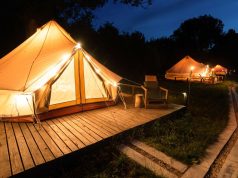There’s nothing quite like the sense of freedom that comes from two wheels, an open road, and the horizon stretching out before you. Cycling adventures abroad combine the thrill of discovery with the satisfaction of self-propelled travel. You set your own pace, stop where you please, and truly immerse yourself in landscapes and cultures far beyond the reach of motorized tours. Whether you’re a seasoned bikepacker or a road cycling enthusiast looking to take your passion overseas, this guide will walk you through every step of planning and executing the perfect bike tour.
Why Choose a Cycling Adventure?

Cycling tours offer unique benefits over traditional travel methods. You cover more ground than you would walking, yet travel slowly enough to notice small details—an inviting farmhouse kitchen, a roadside artisan workshop, or the rhythm of rural life. Pedaling day after day builds endurance and confidence while allowing for genuine connections with locals at the village café or the family-run inn. Additionally, bike touring is a low-carbon, eco-friendly option, minimizing your footprint while maximizing personal challenge and reward.
Planning Your Bike Tour
Selecting Your Route
Start by choosing a region or country that matches your skill level and interests. If you’re new to self-supported travel, consider well-marked, popular routes such as the Camino de Santiago in Spain, the Great Divide Mountain Bike Route in North America, or the Otago Central Rail Trail in New Zealand. Experienced tourers might opt for remote routes through the Caucasus, Patagonia’s Carretera Austral, or Japan’s Shimanami Kaido. Research terrain, elevation gains, road surfaces, and seasonal weather patterns using guidebooks, ride logs, and cycling forums.
Setting a Realistic Budget
Bike touring budgets can range widely depending on accommodation choices, meals, and support services. A fully self-supported tour—camping and cooking—can cost as little as €20–30 per day in Europe or $15–25 in Southeast Asia. For a more comfortable ride, factor in guesthouses, mid-range hotels, occasional restaurant meals, and bicycle shipping or rental fees; this often totals $50–$75 per day. Always include emergency funds for repairs, medical care, or unplanned transportation.
Essential Gear and Packing Tips
Bike and Equipment
- Touring Bicycle or Gravel Bike: Durable steel or aluminum frames preferred for comfort and repairability
- Panniers and Rack: Waterproof panniers front and rear, plus a sturdy rack
- Spare Tubes & Patch Kit: At least two spares and a high‐quality patch kit
- Multi-Tool & Pump: Compact multi-tool set with Torx, chain tool, and mini pump
- Lights & Reflective Gear: Front and rear lights, reflective vest, or ankle bands
Packing Smart
- Layered Clothing: Merino base layers, insulating mid-layers, waterproof shell
- Lightweight Sleep System: 3-season sleeping bag or quilt and inflatable sleeping pad
- Cooking Kit: Ultralight stove, small pot, spork, and fuel canister
- Navigation Tools: Smartphone with offline maps, paper maps as backup
- First-Aid Kit: Basic supplies plus any personal medications
Training and Fitness Preparation

Building endurance and strength ahead of your tour will make long days in the saddle far more enjoyable. Aim for consistent training of 3–5 rides per week, gradually increasing weekly mileage by 10–15 percent. Incorporate hill repeats to prepare your legs for sustained climbs, and include cross-training sessions—yoga for flexibility, strength workouts for core stability, and light cardio for recovery.
Navigation and Tech Tools
Modern technology can simplify route-finding, but it’s wise to blend digital and analog methods. Use dedicated GPS bike computers (Garmin Edge, Wahoo Elemnt) for turn-by-turn directions; load custom GPX files from cycling communities. Pair these with reliable smartphone apps (Komoot, RideWithGPS) for on-the-fly adjustments. Always carry waterproof paper maps or cue sheets as backups in case of battery failure or poor signal.
Safety and Health Considerations
- Helmet & Visibility: Always wear a properly fitted helmet and use high-visibility clothing in traffic
- Local Regulations: Research cycling laws in each country—helmet mandates, road-sharing rules
- Hydration & Nutrition: Carry a water bladder or bottles; use electrolyte tablets and calorie-dense snacks
- Medical Kit: Include antiseptic, blister pads, pain relievers, and altitude medication if needed
- Insurance & Emergency Plan: Obtain travel insurance covering evacuation and bike damage; share itinerary with a trusted contact
Cultural Immersion and Local Etiquette
One of the greatest rewards of bike touring is the chance to connect with communities. Learn a few basic phrases in the local language, support family-run guesthouses, and seek out local markets for fresh produce. Respect cultural norms around dress and behavior; observe local customs when photographing people or religious sites. Often, a polite greeting and a smile open doors to the most memorable experiences—shared meals, invitations into homes, and insider recommendations.
Sustainability and Responsible Travel
Cycling tours inherently reduce your carbon footprint, but you can go further by practicing Leave No Trace principles. Pack out all non-biodegradable waste, use refillable water containers, and choose eco-friendly toiletries. Opt for locally owned accommodations and eateries, avoid single-use plastics, and patronize guides who prioritize sustainable practices. Your mindful choices help preserve both natural landscapes and cultural traditions for future generations.
Top 10 Cycling Destinations Worldwide
- Camino de Santiago, Spain – A historic pilgrimage route weaving through villages and vineyards.
- Great Ocean Road, Australia – Coastal cliffs, surfing towns, and eucalyptus-scented breezes.
- Otago Central Rail Trail, New Zealand – Gentle gradients, rustic bridges, and alpine scenery.
- Carretera Austral, Chile – Remote wilderness, glacial lakes, and mountain passes.
- Shimanami Kaido, Japan – Island hopping over suspended bridges, sea views galore.
- Loire Valley, France – Castles, vineyards, and flat riverbanks made for leisurely rides.
- Danube Cycle Path, Europe – an International trail through Germany, Austria, and Hungary.
- Tuscany, Italy – Rolling hills, olive groves, and world-class cuisine stops.
- Munda Biddi Trail, Australia – Off-road through ancient forests and wild jarrah timberlands.
- Tour d’Afrique, Continent-wide – One of the world’s longest organized bike expeditions across Africa.
Final Tips and Unwinding the Bike
After a full day in the saddle, your body craves recovery. Prioritize gentle stretching, foam rolling, and a high-protein meal to repair muscles. Take time to explore your evening stop—visit local hot springs, sample regional dishes, or simply journal your experiences. Adding zero-ride days for sightseeing or rest can recharge both your energy and your enthusiasm for the next leg of the journey.
Conclusion
Cycling adventures abroad are more than a vacation; they’re transformative journeys that test your limits, deepen your cultural understanding, and forge lasting memories. With careful planning, the right gear, and a spirit of curiosity, you can navigate winding mountain roads, coastal highways, and hidden trails across the globe. Ready your bike, pack your panniers, and set forth—you’ll return far richer in stories, friendships, and the simple joy of discovery.
Learn about indigenous cultures in our Journey with Authentic Cultural Experiences.









